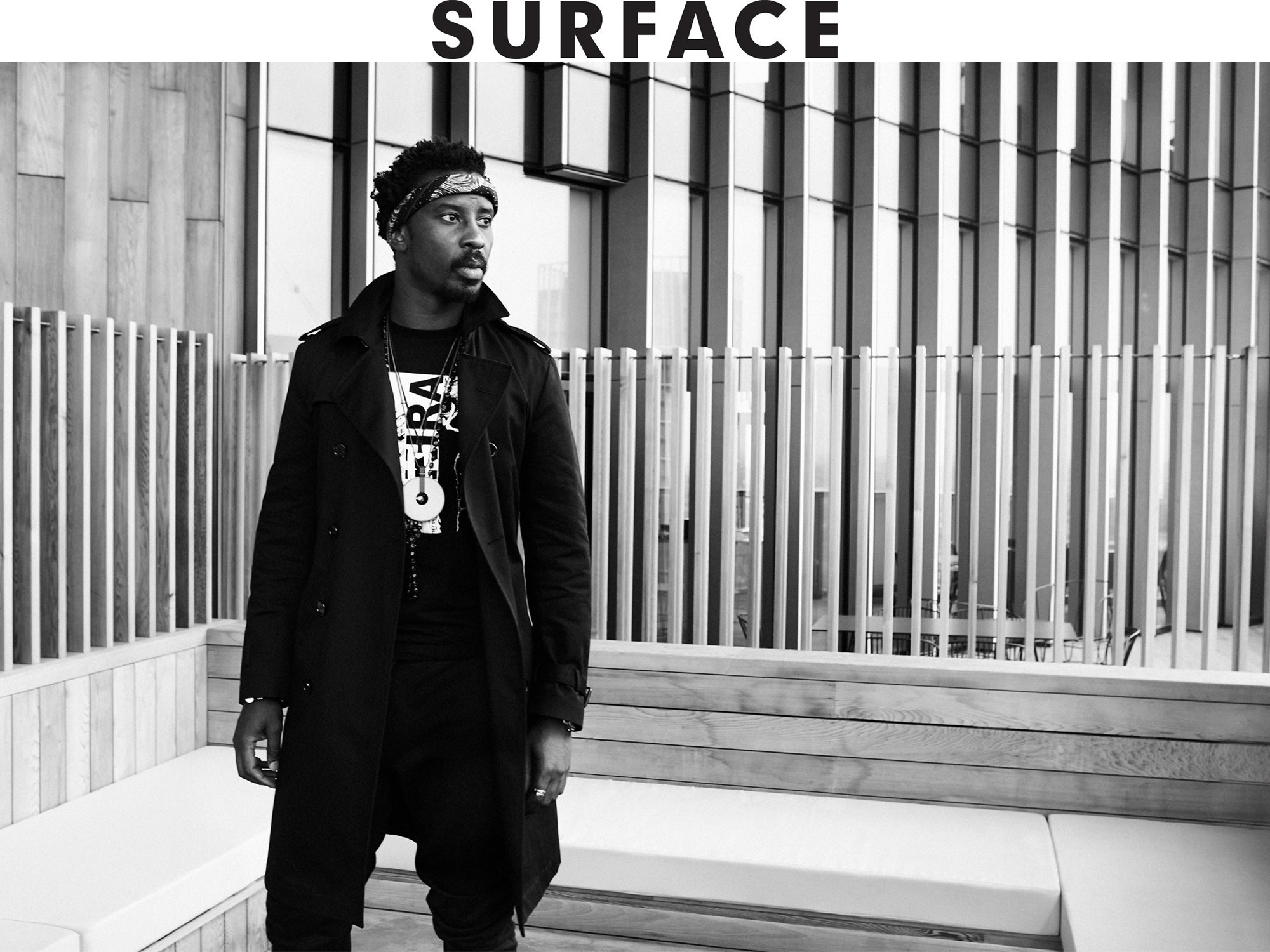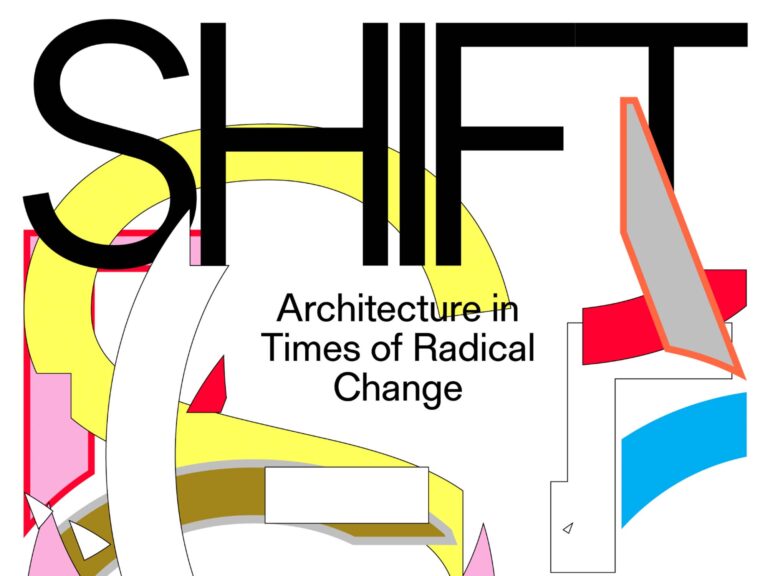By Jorge S. Arango
Design in the 21st century often toggles between slick, high-tech experimentation (aided by computers and 3D printing) and whimsical fantasia (Haas and Campana brothers, or the many recent reworkings of Memphis). To some, then, the oeuvre of Neuchâtel, Switzerland-based multidisciplinary designer Ini Archibong might seem heretical for its sheer celebration of—wait for it—beauty. Yes. Beauty. “I have focused on the blissful potential of reality with a lot of the work that I do,” he says, “exposing the beauty and getting people to try to step into the sublime, or the surreal, or the magical.”
His early mentor, president of Bernhardt Design Jerry Helling, observes, “Sometimes people don’t like the word ‘beautiful.’ But there’s something beautiful, almost spiritual, about Ini’s work…. He’s very well trained technically, so he knows how something has to function. But he’s able to work within those constraints to make something beautiful.”
“An experience of beauty,” wrote the American art critic Peter Schjeldahl, “always resembles a conversion experience, the mind’s joyful capitulation to a recovered or new belief. The merely attractive (pretty, glamorous) and merely pleasing (lovely, delectable) are not beauty, because they lack the element of belief and the feeling of awe that announces it. The attractive or pleasing enhances the flow of my feelings. The beautiful halts the flow, which recommences in a changed direction.”
It is neither inaccurate nor presumptuous to associate Archibong’s work with this notion. Spirituality is integral to his practice of making and informs the products of his inspiration. “I believe in unity,” he explains over wine and seafood at a rooftop bar in Copenhagen. “Everything is one. Everything started as one, everything continues to be one, and everything will always be one. All the different religious schools are describing the exact same thing…. My spiritual practice is really mostly focused on evolving my awareness and my understanding, and my conscious ability to see things. So the best way for me to perceive and make sense of it to you is to be informed about as many different perspectives as I can understand. I find that when you wade through different religions, you enter into the mystical approach to those religions. With Christianity, it would be Gnosticism. With Islam it would be Sufism. With Judaism, it’s the Kabala.”
In everything Archibong designs, then, he strives to find a unity among varying possible approaches to an object. “It’s important because I want to be an accurate practitioner of my own craft,” he says, “to understand all these different perspectives of the exact same thing and try to make sense of how they’re saying the same thing and why they’re saying it in the way they’re saying it.” His own aesthetic voice has evoked this unity through a preponderance of fluid line: his forms showcase graceful curves, rounded corners, and arabesques that communicate how varying perspectives can flow one into the other rather than remain at perpendicular, irreconcilable odds. He favors glass for its transparency and purity, but also works with warm metals (particularly brass) and wood. Whatever material, however, it is manipulated in the service of the sublime. His collection for Sé, for instance, invokes both heaven and earth. A group of pendants appear like a constellation of planets or forbidden fruits suspended in mesh; a table and chairs recall mysterious rock cairns often placed along paths for religious or ceremonial purposes; a table is cantilevered in some incongruous way that makes us wonder at the magic act that made it possible.
This orientation infuses a palpable dimension into Archibong’s work that has proved irresistible to a diverse roster of luxury clients, including Hermès (the “Galop” watch), Knoll (contract furnishings), Sé Collections (the 22-piece “Below the Heavens” range of furniture and lighting), Dario Pegoretti (“We’re going to make a cool steel-frame road bike”), Bernhardt (“one of our best-selling training tables, and by far the most elegant,” Helling says), and Vacheron Constantin (“a hand-sculpted, cast-aluminum table mirror based on the passage of time”). He has also been developing new work with the Chelsea gallery Friedman Benda after a fruitful collaboration with owner Marc Benda yielded the unique Vernus chandelier Friedman Benda gallery sold at last November’s Salon Art + Design in New York. Archibong is also conjuring an immersive art installation for a group exhibition that opens November 10th at the Dallas Museum of Art (through February 23rd). The multimedia show, “Speechless: Different by Design,” is co-produced with the High Museum in Atlanta, which will host the exhibition April 25th through September 6th of 2020. It showcases a group of site-specific pieces by artists such as Matt Checkowski, Misha Kahn, and Laurie Haycock Makela that, says curator Sarah Schleuning, “use different sensory experiences to communicate,” rather than relying solely on the verbal.
The son of Nigerian immigrants, the tall, lanky, 36-year-old Archibong grew up outside of Los Angeles hungrily absorbing the hip-hop culture of the city. After scrapping business school and becoming a musician, then pursuing a career in architecture, he eventually enrolled, at 24, in the environmental design program at the ArtCenter College of Design in Pasadena. “I saw the space in architecture as the backbone to people’s experiences,” he says. “It has a real effect on people’s state of mind, spiritual well-being, and their overall energy. I think the first time I started picking up on that was when I got into reading about Gothic cathedrals and the methods through which they allowed people to be in the position for their souls to become transcendent or elevated, or raise our consciousness through the use of light and the feeling of weightlessness. By the time I got down to the skill of furniture, I realized the role of furniture is setting how you navigate space, and it also carries an energy in a way: It holds and reflects light, and its volume and your volume in relation to it.”
As a junior Archibong caught the eye of Helling, who was teaching an interdisciplinary studio course sponsored by Bernhardt. “It was a rather rigid design brief—commercial folding tables,” Helling recalls, “probably not the most glamorous. He was the obvious standout, but he was creating these amazing things that were way off the design brief.” Helling didn’t move his student’s studio pieces into production, but he did encourage the budding designer, telling him, “Remember something you designed and threw in the trash a few weeks ago and work on that.” Bernhardt awarded Archibong Student Designer of the Year Award as part of the American Design Honors in 2010 at the International Contemporary Furniture Fair in 2010. In 2011, a year after the course, the student project—a collaboration with fellow designers John Phillips and Stephanie Stalker—became the Serif table, which the company showed at ICFF as part of Bernhardt Studio in conjunction with Art Center College of Design, giving the designer global exposure to manufacturers, retailers, and media.
Archibong spent time in Singapore working with Tim Kobe, the genius behind the Apple store concept, then continued his studies at L’École cantonale d’art de Lausanne in Switzerland. He eventually settled in Neuchâtel. Actor and designer Terry Crews then sponsored his “Secret Garden” collection of furnishings at the 2016 Salone Satellite, the emerging talent exhibition of Salone del Mobile in Milan. He’s been on an upward trajectory ever since.
“Every morning before I design anything, I read a spiritual excerpt of some sort,” Archibong says. “Just something that is going to put me in a state where I’m dedicating myself to my day, to evolving my awareness. I almost can’t create otherwise.” His spiritual explorations have recently taken him through re-reading the Bhagavad Gita, and into the Guide to the Bodhisattva Way of Life, Deepak Chopra, the Bahá’í text The Seven Valleys, and Joseph Campbell’s The Inner Reaches of Outer Space.
So how does Archibong reconcile his mystical leanings with the design of luxury products, which one would normally not perceive as particularly meaningful? “I understand why people feel that way,” he admits. “It’s because of the people who are consuming the products, not because of the brand.” Citing Hermès, he says, “That brand is one of the most nonlinear, esoteric brands I’ve worked with. So much that comes out of there is based on feelings, philosophy, metaphor, and a weird, esoteric universe that they’ve created unto themselves…. It’s completely spiritual and emotional.” He believes true luxury is when an object not only serves its functional purpose extremely well and is well made, but it has an intangible dimension that gives it a value that cannot be quantified. In other words, something spiritual. Hermès is “one of the few companies where a key performance indicator is how much does this object touch your soul.”
Pierre-Alexis Dumas, artistic director of Hermès, says Archibong brought his sensitivity and imagination to the stirrup-shaped Galop watch, which nods to the fashion house’s equine heritage. But first he had to put the designer through what Archibong remembers as “Hermès boot camp,” where he combed through the archives to fully understand the mystique and narrative of the brand. “If you want to understand an Hermès watch, look at the typeface of the dial and see how it relates to the watch case,” Dumas says. “In the Galop, look precisely at the number eight and you will see the shape of the case upside down! Ini understands the complexity of designing an Hermès watch, and how every little detail must relate to the whole.” Archibong’s approach, in other words, is holistic
In certain work, like his “Secret Garden” collection, Archibong believes “There is no segmentation of identity. Every single one of those pieces is one-hundred percent L.A. gang culture as much as it is Nigerian royalty. It’s everything I’ve studied, from hand-crafted European luxury that, to being a math geek in prep school, to comic books and fantasy literature. It’s like taking all of the far-reaching aspects of my identity—heritage, sexual orientation, gender, skin color—and imagining it as a period at the end of a sentence.”
That had a powerful impact on Schleuning, curator of the upcoming exhibition “Speechless: Different by Design” at the Dallas Museum of Art. The idea arose from Schleuning’s own role as a mother of a child with motor planning issues. “Being seen outside the spectrum resonated very personally with all the artists. For Ini, he really dug deep into what that means. He really opened up,” she says of his sound installation that pulls on his interests in the blending and merging of the senses.
For the Friedman Benda collaborations, says Marc Benda, one of those facets— Archibong’s background in street culture—was of particular interest. “Street culture today is a very different thing from 20 years ago. It’s completely supplanted high culture. You can wear a hoodie and be very well dressed, or buy a pair of sneakers as a status symbol. It’s not gritty anymore. It’s acquired a very high polish,” he says, noting Archibong’s high commitment to quality. “It retains a sensuality. I pushed him to show up in a different way, to strip his soul bare. It’s not just line, a material, or an aesthetic. You infuse all of yourself into that work.”
The result, even when it’s less rounded and curvaceous, and more angular (as with three new sculptural Friedman Benda pieces targeted for a fall or winter debut) is unapologetically beautiful. To use Schjeldahl’s analogy, it “halts the flow” of feelings, changing their direction. Archibong’s work is a compelling argument for the revival of beauty in design. It’s high time. As Schjeldahl concludes, “There is something crazy about a culture in which the value of beauty becomes controversial. It is crazy not to celebrate whatever reconciles us to life.”










